SOURCE – cannabisbusinesstimes.com
The cannabis industry is growing up. As businesses expand and scale production, leading cultivators continue to adopt best practices commonly seen in more traditional agricultural and manufacturing operations. Cannabis Business Times recently spoke with several leaders in their respective markets to find out which business decisions had the greatest impact on their growth, as well as the lessons they learned along the way.

John Knapp
Founder and CEO
Good Meds
Denver, Colo.
1. Best Decision: Bring extraction in-house.
In early 2016, John Knapp decided to bring his company’s extraction process in house. Previously, Good Meds was outsourcing extractions for its various wax, shatters and oils to a third-party processor.
“We were spending, depending on the month, between $40,000 and $60,000 a month on our processing fees,” he says.
Knapp made the move after the City of Denver decided not to extend a moratorium on issuing extraction licenses. Prior to the measure, Knapp was looking at $250,000 to $300,000 to purchase a license from an existing operation.
Once he was up and running, Knapp cut his monthly extraction costs to about $10,000.
“That has helped us grow that line of business substantially,” he said. “Before [extracts] were about 30 percent of our revenue, and now it’s about 60 percent of our revenue.”
Since bringing the extraction process in house, Good Meds has doubled its profit margins and boosted yields, as well as quality, Knapp says.
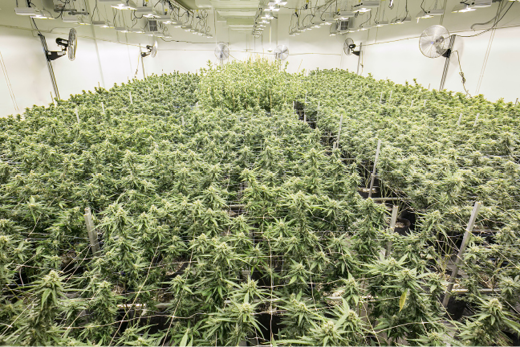
2. Lesson Learned: Find the right consultant and vet them properly.
Unfortunately, for Knapp, bringing extraction in house was initially a struggle.
Good Meds hired a consultant who sold the company equipment that didn’t perform up to Good Meds’ standards, Knapp says, which caused start-up delays and “hundreds of thousands of dollars” in additional processing fees.
“It really slowed our growth on that product line, so we’re still in a battle with them to get some of the money back that we paid,” Knapp says. “Even just recently, we found out that when the weather got cold that they didn’t properly set up the furnace that was part of our extraction booth, so that shut us down for another three weeks.”
Knapp advises that growers do their homework when seeking a consultant.
“Get references and make sure they are who they say they are because there are a lot of people in the industry who claim they’re experts, but they don’t have the experience to say they are true experts,” he says.

Aaron Justis
President
Buds & Roses Collective
Studio City, Calif.
3. Best Decision: Focus on quality over quantity.
Buds & Roses Collective has 26 High Times Medical Cannabis Cup awards, according to the company’s president, Aaron Justis. The accolades are a reflection of the company’s focus on quality, he says, which is a leading factor in their success.
For Justis and his business partner, Tyler Wadleigh, cultivation is a labor of love. “It just so happens that myself and my partner, who runs the grow, love high-quality cannabis,” Justis says. “We’re just focused on cultivating the best cannabis we can.”
Bringing high-quality cannabis to market starts with the application of plant-based nutrients, Justis says. The company also tests leaves to determine nutrient levels in the plants, and tests the soil to see what nutrients are, or are not, available in the soil. “We also do runoff tests, which tells us what nutrients are falling out of the pots when we feed. We use all of this data to readjust the feeding in order to have the healthiest plants,” says Justis.
The team also observes the plants throughout their life cycles and tries to acquire the best and rarest genetics, he says.
The company doesn’t use pesticides, which leads to lower yields (plants are killed off if affected by pests), but this pays off with higher profits and a better customer experience, Justis says. Buds & Roses can charge up to 50 percent more per pound for certain flowers than the average-priced cannabis in California because of the quality, he says.
“That’s a key to our success, and we’ve been able to not always have as much product as [other] people, but have the highest of quality, and we get top dollar for our product,” Justis says.
4. Lesson Learned: Focus on yields per square foot and study basic manufacturing practices.
“When it comes to cultivation, and you’re building out your grow, you want to build your facility so it’s efficient for your needs,” Justis says. “A lot of people talk about how much yield they got per light of cannabis, and it’s really about how many dollars you’re pulling in per square foot, per year in your facility.”
While Justis initially measured yield per light, he says that focusing on square footage maximizes use of floor space.
“That was the only thing we thought about for years – a pound and a half per light, etc., but that means nothing if you’re not flipping the rooms, re-harvesting and doing it over and over again, as many times a year as possible,” he says.
Measuring per square foot helped Justis realize where inefficiencies were occurring, and he responded by reconfiguring rooms so there was always adequate space for clones, vegetation, harvesting, drying and curing, he says.
“You need to plan accordingly to be as efficient as possible, so you’re not having a room that’s not used because it’s waiting,” Justis says. “It’s basic manufacturing production rules that go way beyond cannabis, and you want to study those.”

Tim Cullen
CEO
Colorado Harvest Company
Denver, Colo.
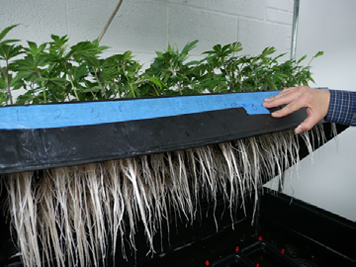
5. Best Decision: Create a test room.
Don’t be afraid to experiment, says Colorado Harvest Company’s Tim Cullen.
Cullen has a 1,000-square-foot room dedicated to experiments, which can range from testing new lights to nutrients or environmental controls. Cullen applies some of the skills he possessed as a former biology teacher to identify new approaches to cultivation.
“I’m comfortable doing the scientific method and taking the time that it takes to perform and test certain variables,” he says.
As of January, he has been testing different methods to improve utilization of square footage in the rooms, including the use of rack systems that are on casters.
“We’re doing different experiments with the layout of the rooms, and if we can get good results out of those, we’ll change the entire grow,” he says.
One experiment that produced positive results involved testing different lighting systems. Through the test, Cullen discovered he could produce an extra half-pound of dried, cured flower per light. After a year-and-a-half of testing, Cullen replaced his entire lighting system with a double-ended Gavita bulb and hood.
“I like to think of [cultivation as] similar to how physicians and attorneys do their trade,” Cullen says. “Nobody ‘does’ law; they ‘practice’ it. That’s exactly what indoor plant production is, too. It’s a practice – not an exact science. There are always things that can be done to increase the production.”
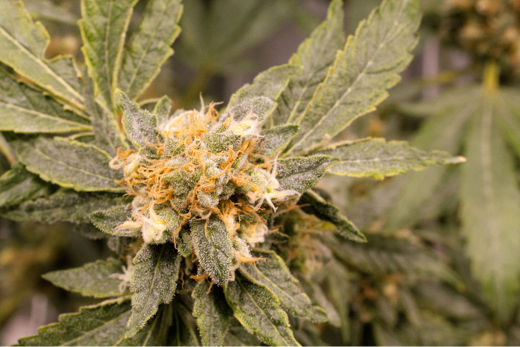
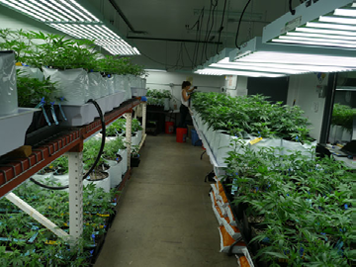
6. Lesson Learned: Avoid too many cooks in the kitchen, and learn to scale with a personal touch.
“When you have too many people who all think they have the right answer, you end up with other issues like the infighting, and people are not excited about coming to work anymore,” Cullen says.
Instead, Cullen identified one highly qualified leader and then hired others who buy into that person’s system.“It’s much easier to run a facility when one person is clearly in charge,” he says.
Having quality people in place becomes increasingly important as a cultivator scales up, he adds. Knowing how to grow a few plants in your basement doesn’t make you immediately qualified to produce at a commercial level, Cullen says. “It’s much more difficult at a larger scale to produce that same quality of product,” he says.
Growers need to understand how to handle larger volumes of plants, Cullen says. Still, no matter how much automation is in place, plants still need the hands-on care to ensure a high-quality product, he adds.
“Think of them as little people,” he says. “If you walk into a room and you think it’s too hot, it’s too hot for the plants. If you think it’s too cold, it’s too cold for the plants. So being able to provide that same level of care to a large number of plants is a lot of it.”

Will Denman
President
Solstice
Seattle, Wash.
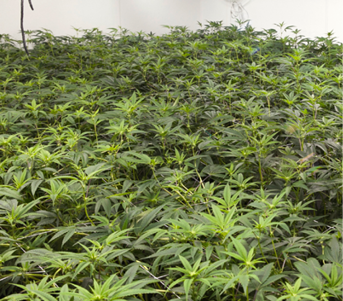
7. Best Decision: Learn from other industries.
The cannabis industry is still relatively new, which creates challenges for growers who are trying to adopt best practices. Denman and his partner, Alex Cooley, realized their operation would benefit if they built their team with professionals from similar industries.
“We’re industrializing cannabis,” Denman says. “That means we have to think about what this looks like in 10 years and start making decisions based on that vision today. People who bring experience from other industries that have gone through … that process have an easier time digesting that. This mindset has completely changed the way we look at and measure the business.”
Solstice has a full-time staff of 71. Key personnel include employees with experience in the alcohol and horticulture industries.
“The key was shifting the mindset from needing team members who had great cannabis experience to targeting individuals with experience in similar areas, like plant sciences for production staff and alcohol for sales staff,” Denman says.
8. Lesson Learned: Get help and build the right team.
In the early years, Denman and Cooley tried to do everything themselves. They quickly realized that trying to run a commercial-scale grow operation with two people wasn’t feasible.
“We built our first facilities, kept the books, grew the plants and sold products into dispensaries,” he recalls. “We kept our support staff relatively small.”
The pair then decided that to scale production they needed to build the right team. “It can be tough and expensive to find good people, but when you do, they’re game changers,” Denman says.
They focused on building a “dream team” and wooed top talent by offering attractive benefit programs and incentive programs. “What you realize once you’ve brought on a few talented people is that you weren’t nearly as good as you thought,” he says. “It’s humbling and reassuring all at once. The team we have today is the main reason for our success.”
